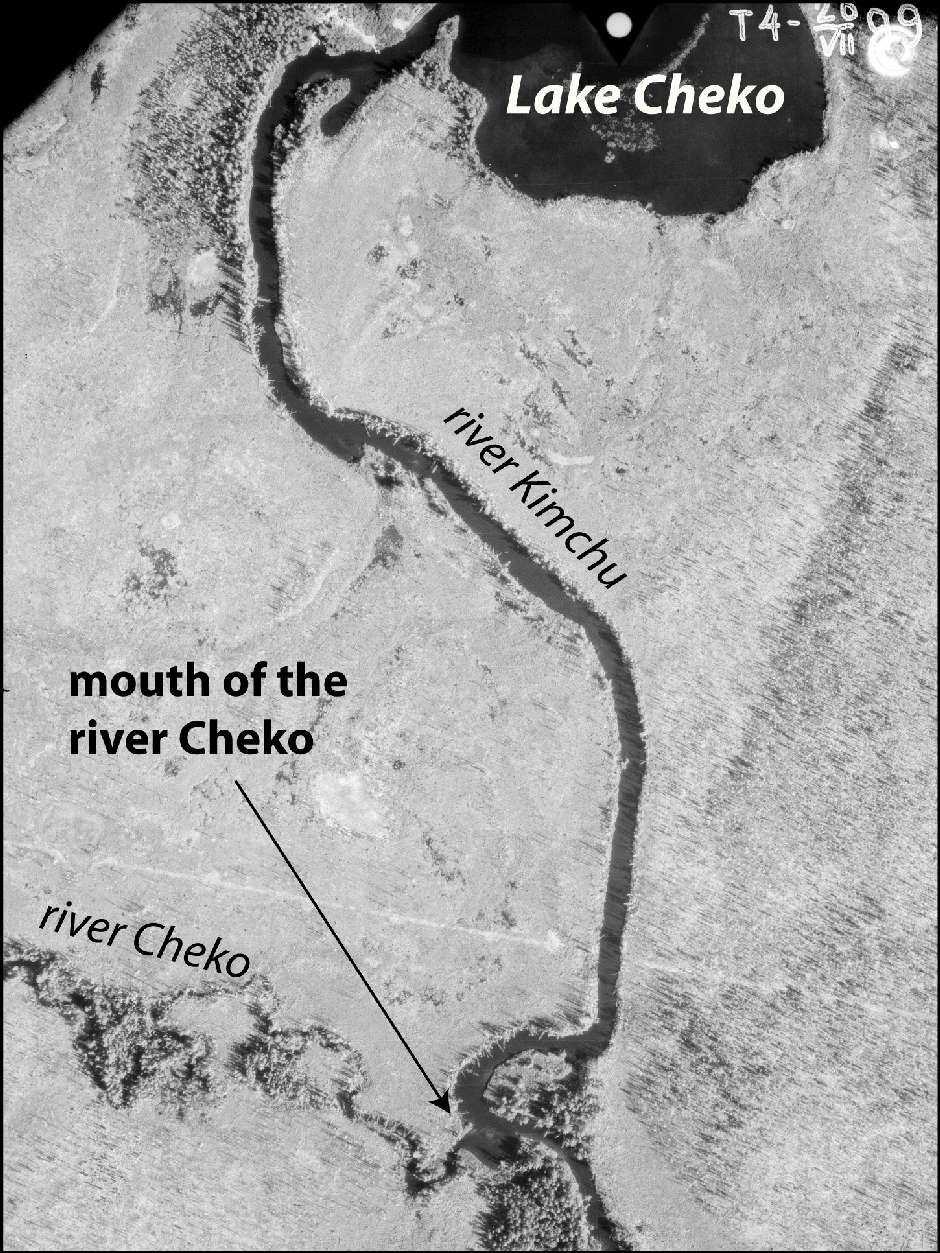

Fig. 2 Aerial photograph of the Lake Cheko southern shore and surroundings collected during the Tunguska99 expedition. The mouth of 'River Cheko' flowing into 'River Kimchu' ~1 km to the south of the lake is indicated. Note that several eyewitness testimonies refer to 'River Cheko' and not to 'Lake Cheko'.
To download a higher resolution image click here: 1075 kb.
Hundreds of eyewitnesses have given their testimonies about the Tunguska event. No one of them has remembered the existence
of the lake Cheko before 1908. The more complete collection of testimonies is that of Vasilyev and co-workers
(1.4 Mb, Russian). It contains direct observations of the Tunguska explosion from 386 different
points and a list (0.8 Mb, Russian) of the geographical coordinates of these points. To these observations, the authors have added news published in
newspapers, reports and communications from many official employees, etc..., for a total of 708 testimonies.
In this collection, when “Cheko” is mentioned, the testimony refers to the river Cheko, to its “mouth”,
not to the lake (see photo). The lake Cheko, at about one kilometre from the mouth of the river Cheko
is not mentioned (see, e.g., the English translation of the account by the Evenk L. V. Dzhenkoul).
Only one “eyewitness” names lake Cheko: the Evenk V. N. Dmitriev (born in 1924!) which reports in 1964 what seen by other people. He
mentions Cheko as a landmark on the Strelka-Vanavara trail. He adds that the main trail was going through the place of Kulik’s izba. This
statement indicates that his remembrance refers to a long time after the 1908 event.
Some eyewitnesses refer about the formation of a lake during the Tunguska event. They did not indicate the name of the lake or
its location. Therefore we cannot refer their testimonies to the lake Cheko (See, e.g. I. P. Lyuchetkan).
V. A. Koshelev
reports (2.9 Mb, Russian) that the Evenk P. D. Doptyna (born in 1880) stated that, when she was young
only a swamp was present on the site of the lake Cheko. The lack of testimonies on the existence before the Tunguska event
of such a remarkable landmark as lake Cheko is a strong argument in favour of the hypothesis that it was formed as a result of
the 1908 impact.